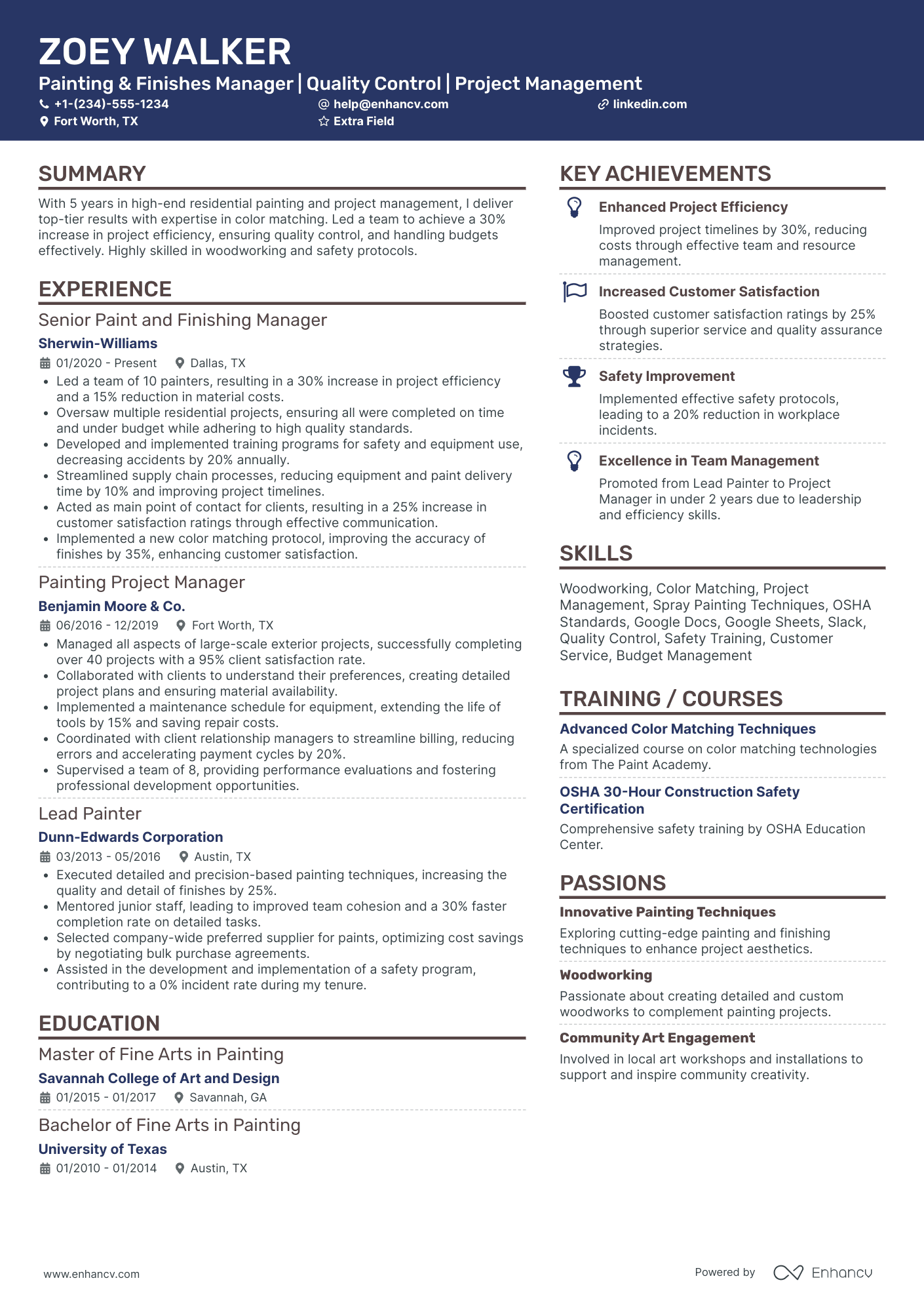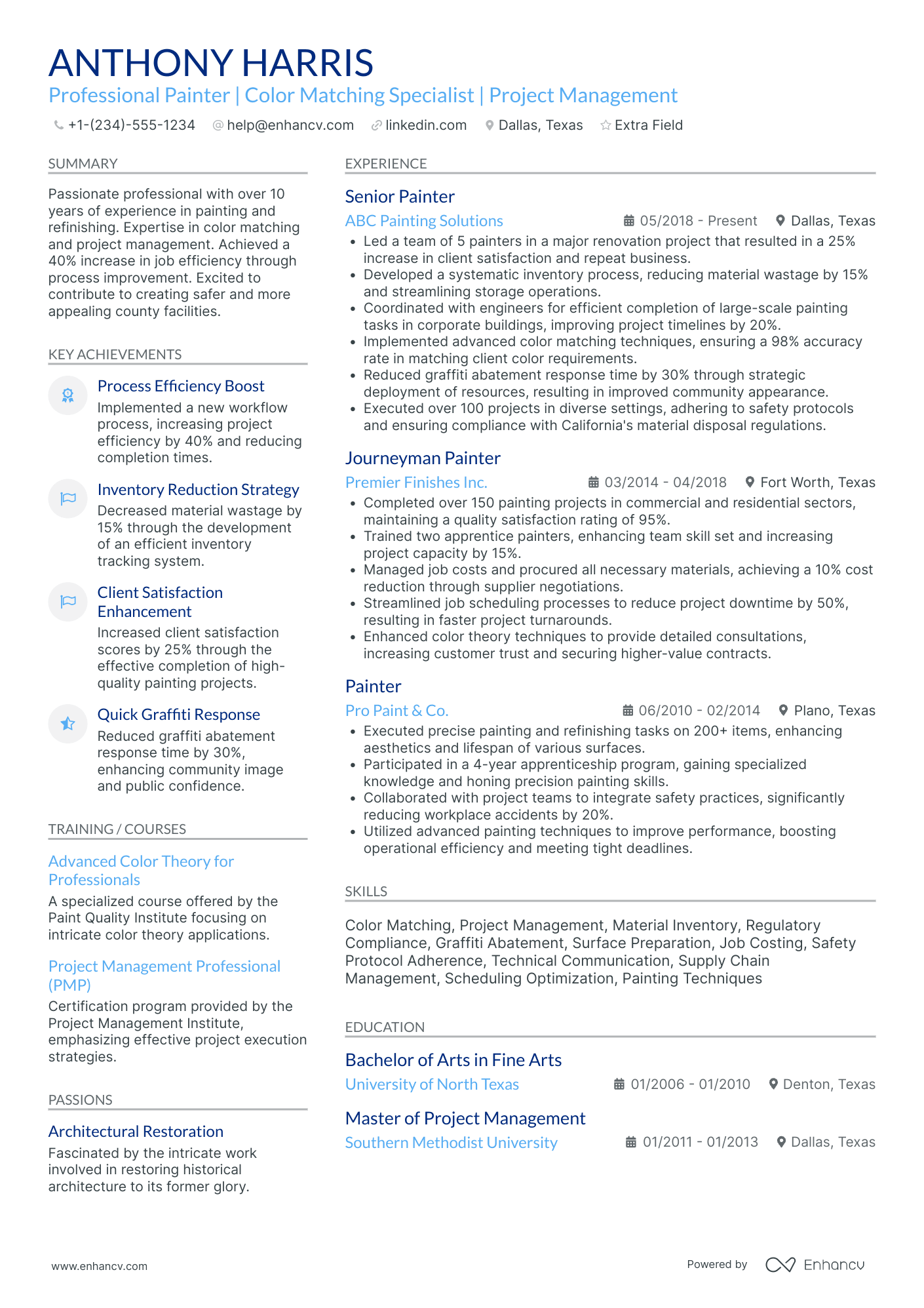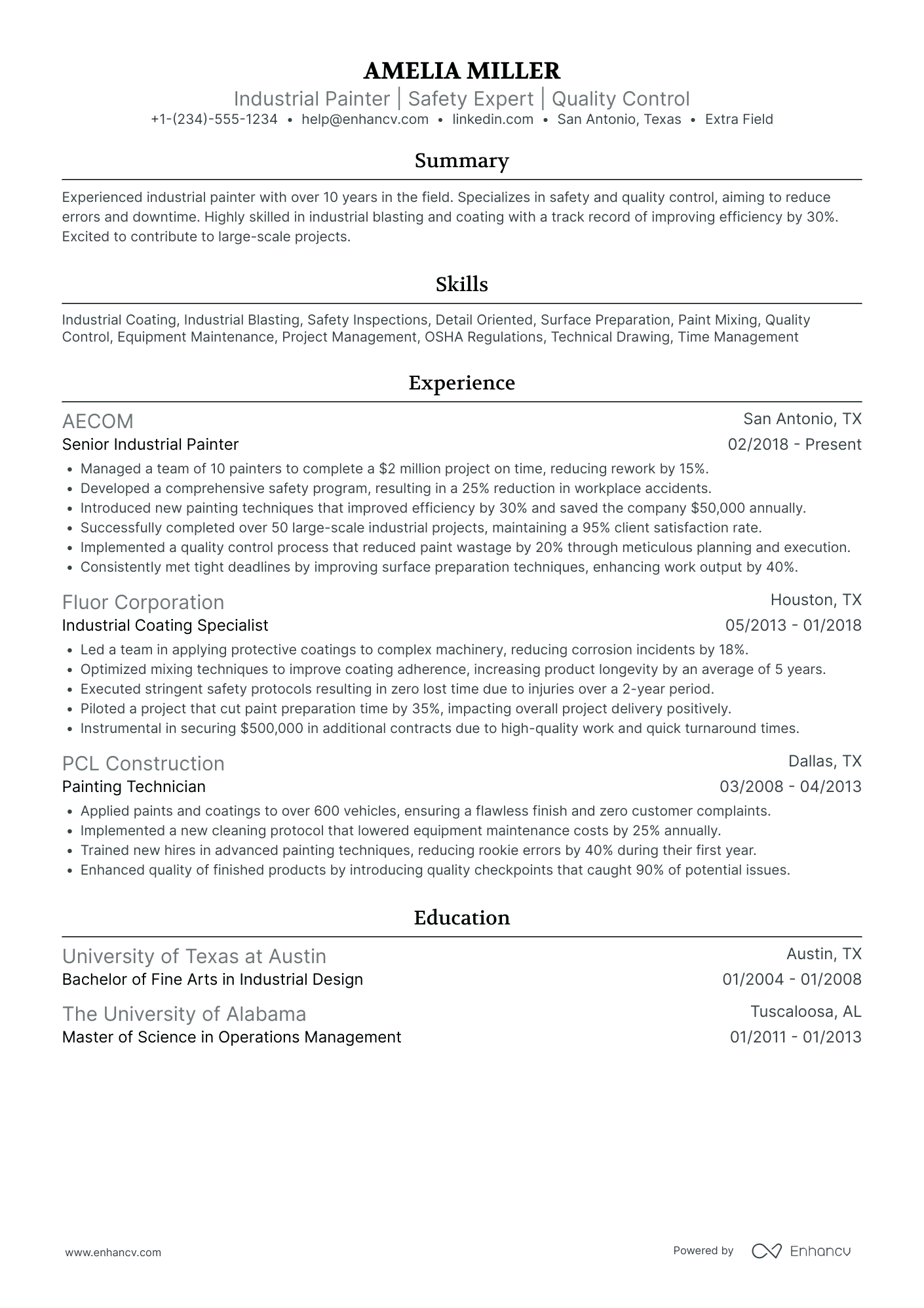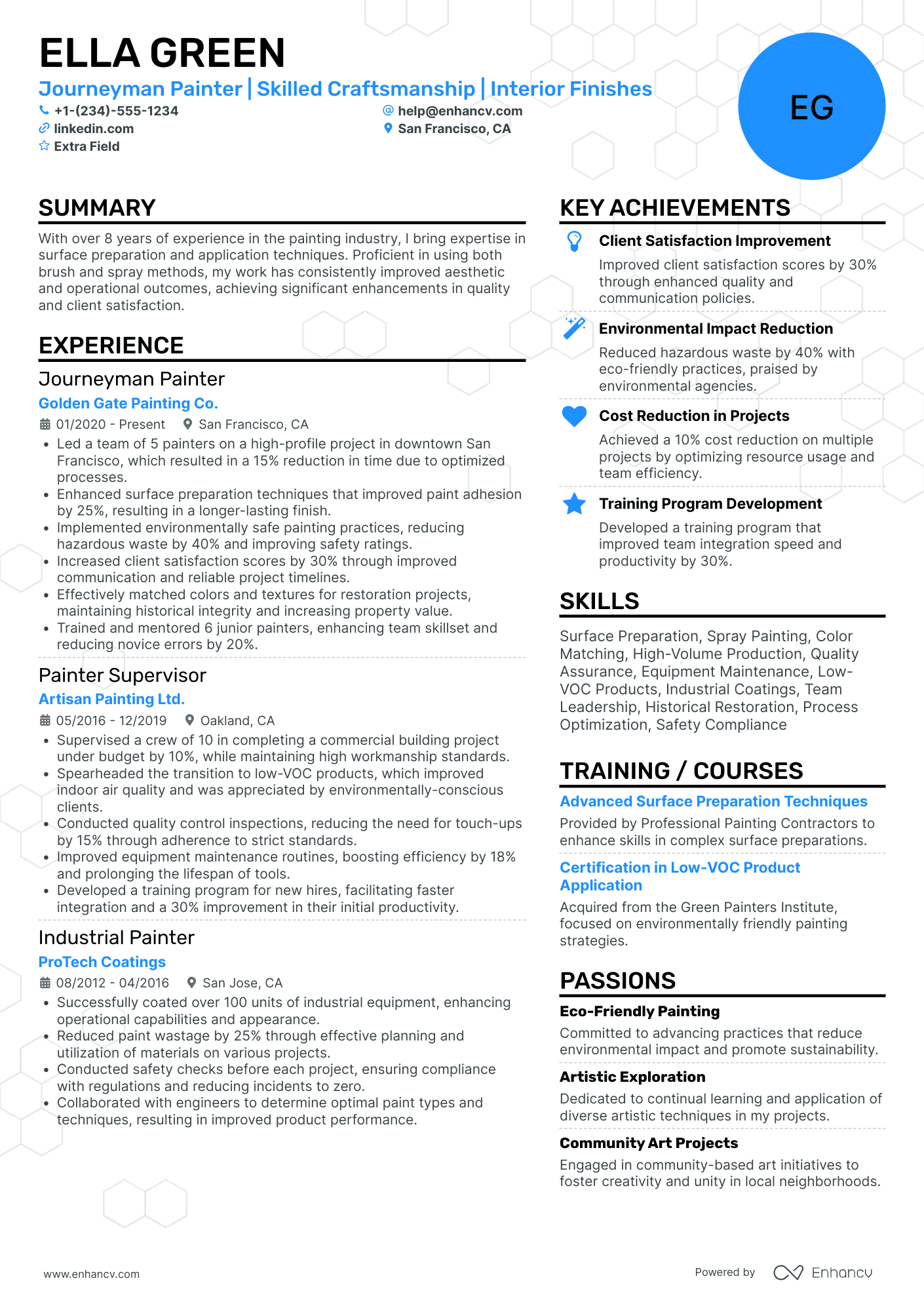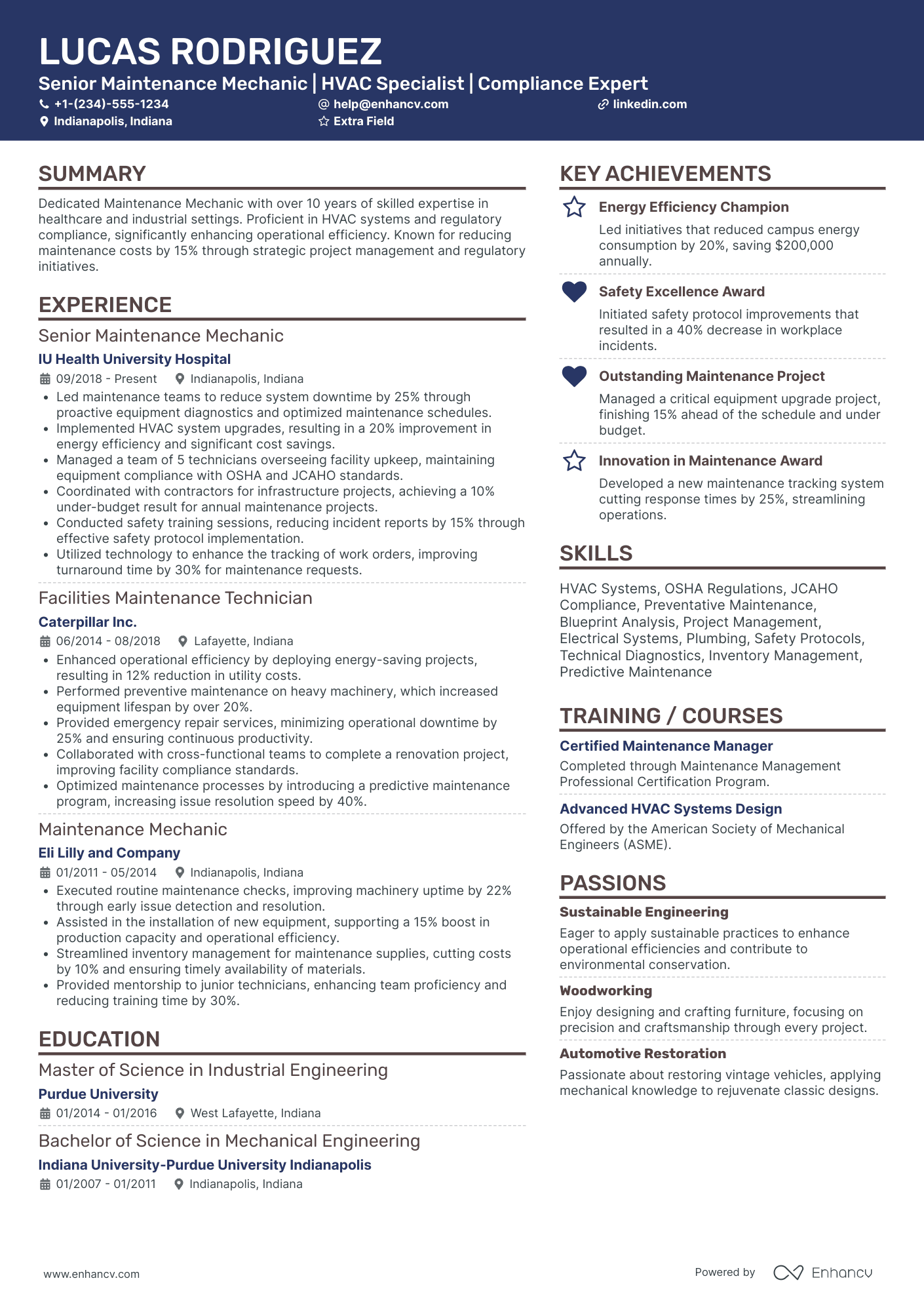Painter may struggle with effectively showcasing a diverse range of projects on their resume. By using our resume examples, they can highlight their versatile skill set and artistic accomplishments in a structured and compelling way. Dive into the examples below to craft a portfolio that grabs attention.
Painter resume examples
By Experience
Lead Painter
Experienced Automotive Painter
Painter Project Manager
Master Painter
Journeyman Painter
Apprentice Painter
Painter Supervisor
Chief Mural Painter
Head Scenic Painter
Senior Industrial Machinery Painter
By Role



